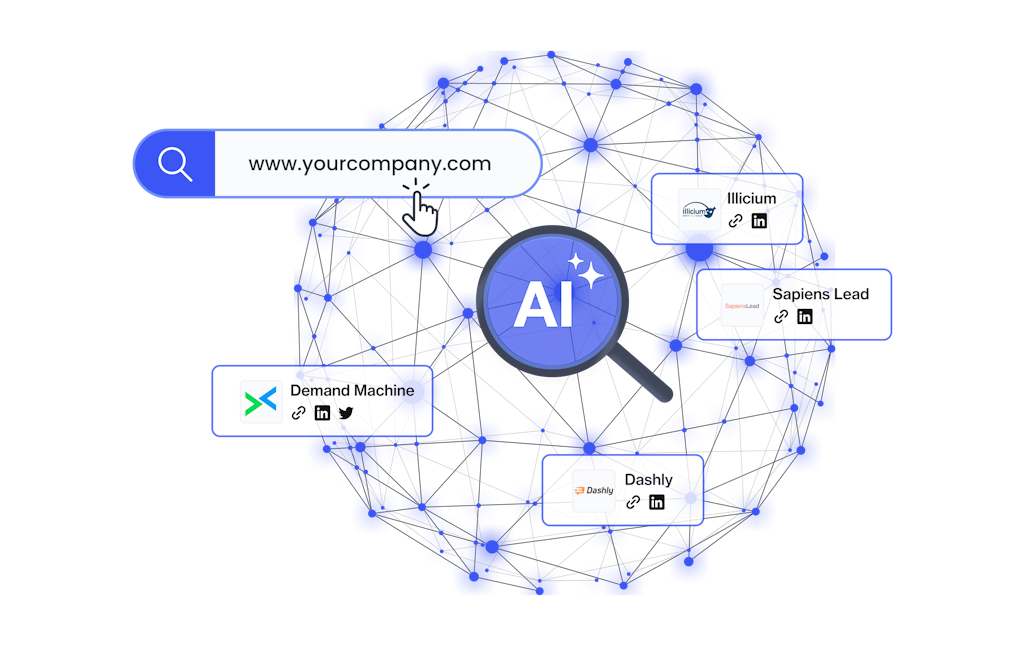Measuring B2B Marketing Metrics and KPIs
Measuring B2B Marketing Metrics and KPIs

B2B marketing, or business-to-business marketing, involves selling products or services from one business to another. Unlike B2C (business-to-consumer) marketing, which focuses on individual consumers, B2B marketing targets other businesses as its primary audience. The nature of B2B transactions demands a more nuanced and data-centric approach to marketing efforts.
Gone are the days when simply generating leads or increasing website traffic sufficed as markers of accomplishment. B2B marketers must dig deeper, analyzing various metrics and KPIs to understand their strategies' effectiveness better.
B2B marketing metrics and Key Performance Indicators (KPIs) provide insights into your marketing efforts performance, helping you make data-driven decisions, optimize your strategies, and drive business growth.
What are B2B Marketing Metrics?
What are B2B Marketing Metrics?
A metric is a standardized way of quantifying a particular aspect of business performance. These measurements are expressed as numerical values, making them easy to track and analyze.
In B2B marketing, metrics enable organizations to monitor and evaluate various aspects of their marketing activities. Here are some key B2B marketing metrics commonly used to gauge marketing activities, acquire new business, and nurture existing client relationships.

Lead generation metric
Lead generation metric
Lead conversion rates, cost per lead (CPL), marketing-qualified leads (MQLs), and sales-qualified leads (SQLs) help measure the percentage, cost, and interest of generated leads that convert into paying customers. It highlights the effectiveness of lead nurturing and sales efforts.
Customer acquisition metrics
Customer acquisition metrics
Through churn rate, customer lifetime value (CLV or LTV), or customer acquisition cost (CAC), businesses can measure the cost of acquiring a new customer and the total revenue to expect from a customer over their entire relationship.
Content and engagement metrics
Content and engagement metrics
Click-through rate, website traffic, and engagement rates help businesses understand the level of interaction and effectiveness of their content.
Client relationship metrics
Client relationship metrics
Net promoter score (NPS), customer satisfaction(CSAT), and retention rate gauges customer loyalty, satisfaction, and the percentage of customers continuing to do business with the company over a specified period.
These metrics provide data-driven information into how well a marketing strategy is performing, allowing organizations to make informed decisions and optimizations.
What is the Difference Between KPIs and Metrics in Marketing?
What is the Difference Between KPIs and Metrics in Marketing?
Key Performance Indicators (KPIs) and metrics are essential for assessing performance and guiding decision-making, but they serve different purposes.
Metrics are specific, quantifiable data points that organizations can use to track and evaluate various aspects of marketing performance. Examples include the number of social media followers, website traffic sources, email bounce rates, and ad click-through rates.
On the other hand, key performance indicators (KPIs) help answer the question, "Are we achieving our goals?" Examples of KPIs include Customer Acquisition Cost (CAC), Customer Lifetime Value (CLV), Return on Investment (ROI), and Net Promoter Score (NPS).
Why are B2B Metrics Important to Track?
In B2B marketing, tracking metrics guide marketing strategies and allow businesses to navigate the changing landscape effectively. Here are reasons why tracking B2B metrics is of paramount importance:
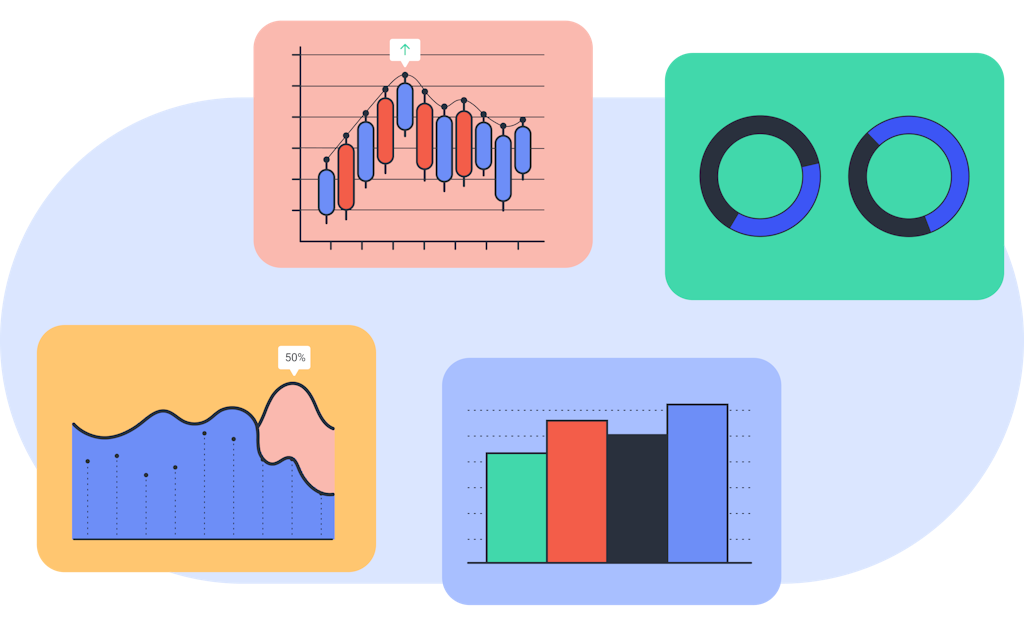
Data-driven decision-making
Data-driven decision-making
Metrics provide marketers with tangible, quantifiable data about their efforts. By continuously monitoring and analyzing metrics, businesses can make informed adjustments to their strategies, optimizing them for better results.
Informed marketing planning
Informed marketing planning
B2B metrics offer insights into customer behavior, preferences, and pain points. Examining metrics related to website traffic, content engagement, and lead generation lets businesses tailor their marketing strategies to meet the needs of their target audience.
Budget allocation optimization
Budget allocation optimization
B2B metrics guide businesses to decide where to allocate marketing dollars. Businesses can identify which delivers the best results by examining the performance of different campaigns, channels, or initiatives.
Demonstrating ROI and impact on revenue
Demonstrating ROI and impact on revenue
By tracking metrics, businesses can assess the financial impact of their marketing strategies. For example, if the CAC is decreasing while CLV is increasing, it signifies that marketing efforts are acquiring customers more efficiently and retaining them longer.
To achieve success and experience longevity, organizations must stay up-to-date with B2B marketing metrics.
See the magic for yourself
See the magic for yourself
Why waste time on prospects that don't convert?
Get a free trial or book a personalized demo.
Start Now Why waste time on prospects that don't convert?
Get a free trial or book a personalized demo.
Free Trial
Dedicated CSM
Global Coverage
GDPR compliant
What are Some of the Important B2B Metrics in Marketing?
What are Some of the Important B2B Metrics in Marketing?
Tracking B2B metrics is essential for several key reasons, each playing a critical role in the success of your marketing efforts and overall business growth:
Supports decision-making
Supports decision-making
Informed decisions rely on data. Metrics provide the data needed to guide marketing strategies effectively.
Lead sources and ROI
Lead sources and ROI
Metrics reveal which lead sources are most profitable, allowing for resource allocation where they yield the highest return on investment (ROI).
Lead conversion
Lead conversion
Tracking metrics help optimize lead conversion rates, ensuring efficient use of marketing efforts.
Marketing budgets
Marketing budgets
Metrics enable businesses to allocate budgets wisely, directing resources to high-performing campaigns.
Helps grow the company
Helps grow the company
Tracking metrics contributes to company growth by ensuring marketing efforts align with objectives and deliver positive ROI.

B2B metrics allow businesses to leverage data to make smarter decisions. These metrics guide your marketing efforts, ensuring you stay on the path to success in the competitive landscape.
How to Set B2B KPIs
Setting B2B KPIs ensures your marketing efforts meet your business objectives and provide a clear path for measuring progress. The SMART method is a well-established framework for setting specific, measurable, achievable, relevant, and time-bound goals and KPIs.
Here is a deeper look at each component of the SMART framework:
Specific
Specific
Be clear and specific about what you want to achieve. For example, instead of saying, "Increase website traffic," say, "Increase monthly organic website traffic by 20%."
Measurable
Measurable
You should be able to track progress and determine when you achieve the goal. For instance, rather than stating, "Improve customer satisfaction," you can state, "Increase customer satisfaction survey scores by 10 points within six months."
Achievable
Achievable
Assess if the goal is realistically attainable within the available resources, time, and constraints. For example, setting a goal to double website traffic in a week may not be achievable, but doubling it over a year may be more realistic.
Relevant
Relevant
Ensure your KPI is relevant to your business objectives. If your business focuses on increasing profitability, a relevant KPI might be to "Reduce customer acquisition costs by 15%."
Time-Bound
Time-Bound
Establish a clear time frame or deadline for achieving the goal. For example, instead of saying, "Increase social media engagement," be specific, "Increase social media engagement by 20% in the next three months."
By applying this method, businesses can set themselves up for success by setting clear expectations and benchmarks for their endeavors.
1. Website Traffic
It's the volume of visitors who access your website during a specific period. Website traffic is a fundamental metric in digital marketing and helps assess the effectiveness of your online presence.
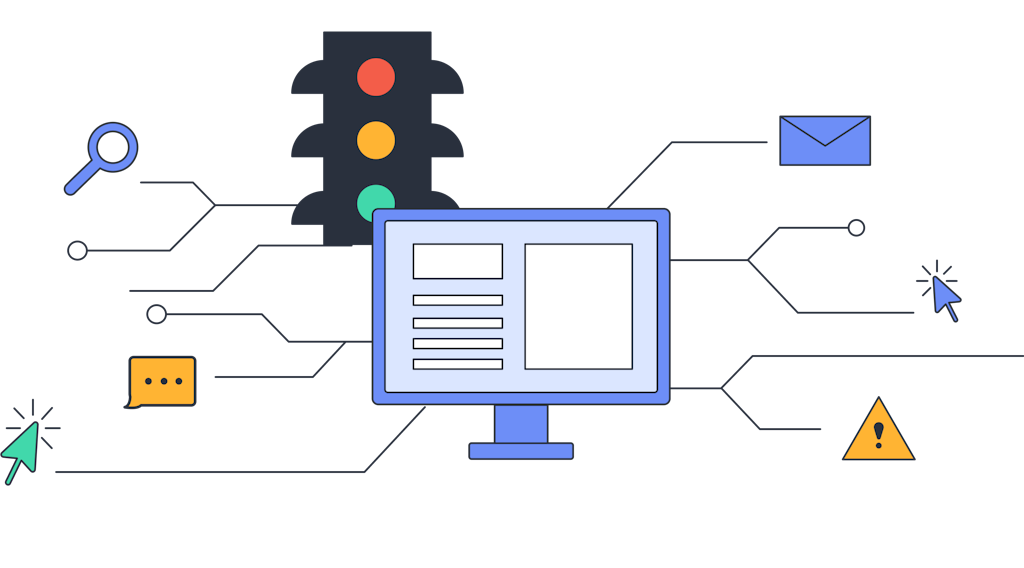
Google Analytics is a widely used tool for tracking website traffic. It provides detailed information about various aspects of your traffic, including:
Organic traffic
Organic traffic
Visitors who find your website through search engines like Google. Organic traffic indicates how well your website ranks in search results.
Paid traffic
Paid traffic
Users who arrive via paid advertising campaigns, such as Google Ads or social media ads. It helps assess the effectiveness of your paid marketing efforts.
Source and medium of traffic
Source and medium of traffic
Google Analytics categorizes traffic sources into different channels, such as direct (users who type your website URL directly), referral (visitors from other websites), and social (traffic from social media platforms).
Conversions by source
Conversions by source
Understanding conversions like sign-ups, purchases, or inquiries by traffic source allows you to identify which channels most effectively convert visitors into customers or leads.
With tools like Google Analytics, you can dive deeper into different facets of your traffic, helping you refine your marketing strategies, optimize user experiences, and drive meaningful conversions.
2. Conversion per Activity
A conversion occurs when a visitor takes a desired action on your website, such as purchasing, signing up for a newsletter, filling out a contact form, or downloading a resource. Google Analytics is excellent for tracking conversions and understanding user behavior. It enables you to:

Visitors who find your website through search engines like Google. Organic traffic indicates how well your website ranks in search results.
Visitors who find your website through search engines like Google. Organic traffic indicates how well your website ranks in search results.
Analyze users' steps before completing a goal, helping you identify drop-off points in the conversion process.
Analyze users' steps before completing a goal, helping you identify drop-off points in the conversion process.
Monitor e-commerce transactions if you run an online store. You can track revenue, transactions, and products sold to gauge the effectiveness of your online sales efforts.
Monitor e-commerce transactions if you run an online store. You can track revenue, transactions, and products sold to gauge the effectiveness of your online sales efforts.
Understand how marketing channels, including organic search, paid advertising, and email marketing, contribute to conversions.
Understand how marketing channels, including organic search, paid advertising, and email marketing, contribute to conversions.
Determine which marketing touchpoints drove conversions through attribution modeling.
Determine which marketing touchpoints drove conversions through attribution modeling.
Conversions are a more meaningful metric than website traffic because they directly indicate user engagement and the effectiveness of your website in persuading visitors to take action.
3. Marketing Qualified Leads (MQLs)
MQLs are customers who have demonstrated interest in your products or services based on their engagement with your marketing efforts. On the other hand, sales-qualified leads (SQLs) have met more specific criteria, making them highly likely to convert into customers.
SQLs demonstrate a clear intent to purchase or engage in a sales conversation. Qualifying leads, whether as MQLs or SQLs, is essential for several reasons:
Efficient resource allocation
Efficient resource allocation
It ensures sales teams focus on leads with the highest likelihood of converting into customers, improving efficiency and productivity.
Improved customer experience
Improved customer experience
By nurturing MQLs with relevant content and information, you can provide a more personalized and valuable experience, increasing the likelihood of conversion.
Better sales forecasting
Better sales forecasting
Separating leads into different categories allows for accurate sales forecasting, helping businesses set realistic revenue targets and allocate resources effectively.
Cost efficiency
Cost efficiency
You can identify which marketing channels and strategies generate the most high-quality leads, allowing you to optimize marketing spend.
Calculating the cost per MQL involves determining how much you spend on marketing to generate a certain number of Marketing Qualified Leads.
The formula is Cost per MQL = Cost Per Lead (CPL) / Total Number of New MQLs. This metric helps assess the efficiency of your marketing campaigns in terms of lead generation and qualification.
See the magic for yourself
See the magic for yourself
Why waste time on prospects that don't convert?
Get a free trial or book a personalized demo.
Start Now Why waste time on prospects that don't convert?
Get a free trial or book a personalized demo.
Free Trial
Dedicated CSM
Global Coverage
GDPR compliant
4. Lead Quality
This method assigns a numerical value to leads based on their behavior and characteristics. Leads that meet specific criteria have higher scores, indicating a higher likelihood of conversion.
Effective lead scoring involves defining criteria for meeting your ideal customer profile (ICP).
By assigning higher scores to leads that closely match your ICP, you can prioritize those leads for more personalized and direct engagement, ensuring your efforts focus on the right audience.
It's essential to understand where your leads are coming from. Different marketing channels and campaigns may attract leads with varying levels of quality. Analyze the conversion rates of leads from different sources. For example, leads from organic search traffic might convert at a higher rate than leads from social media advertising.
5. Customer Lifetime Value(CLV)
CLV provides insights into the long-term revenue potential of a single business customer. CLV can be calculated using this formula: Customer Lifetime Value (CLV) = Average Transaction Size x Number of Transactions x Retention Period.
Average transaction size
Average transaction size
It represents a customer's average spending during a single transaction or purchase.
Number of Transactions
Number of Transactions
This indicates how many times a customer is expected to make a purchase or engage in a transaction over their lifetime as your customer.
Retention period
Retention period
The retention period represents the expected duration of the business relationship with the customer.
Focusing on CLV encourages businesses to prioritize customer satisfaction and loyalty. Satisfied customers will likely make repeat purchases and remain loyal, contributing to higher CLV.
6. Form Conversion Rate
This metric measures the percentage of website visitors who complete a form on your website. These forms can range from contact forms and lead generation forms to newsletter sign-ups and request-for-information (RFI) forms.
Forms collect valuable contact information, such as email addresses, names, and company details. This data is essential for lead nurturing and further communication. Filling out a form signifies interest or engagement with your content, products, or services.
The formula to calculate the form conversion rate is as follows: Form Conversion Rate = (Total Form Conversions / Total Visitors) * 100.
Total form conversions
Total form conversions
The number of times visitors complete the form
Total visitors
Total visitors
The number of unique visitors who had the opportunity to complete the form
A low form conversion rate may indicate various issues, such as unappealing form design, unclear value proposition, or misalignment between the form and the visitor's expectations.
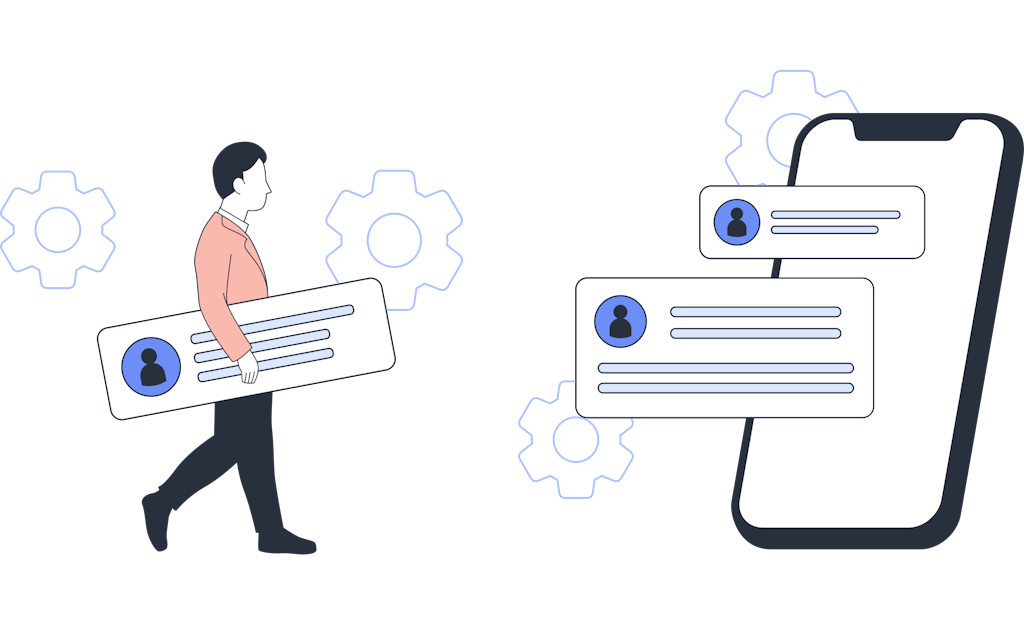
7. Customer Acquisition Cost
CAC is a financial metric that calculates the average cost your business incurs to acquire a new customer. It considers all the expenditures related to sales and marketing activities to attract and convert prospects into paying customers.
The formula to calculate CAC is Customer Acquisition Cost (CAC) = Total Amount Spent on Sales and Marketing / Number of Customers Acquired.
Total amount spent on sales and marketing
Total amount spent on sales and marketing
It includes all costs associated with marketing campaigns, advertising, sales team salaries, technology tools, and other expenses directly related to acquiring customers.
Number of customers acquired
Number of customers acquired
This represents the total number of new customers gained during a specific period.
A low CAC indicates your sales and marketing efforts are efficient and cost-effective in acquiring new customers. A high CAC may suggest inadequacies in your acquisition strategies. Evaluate if the long-term value of the customers justifies the higher acquisition costs.
8. Lead to Close Conversion Rate
It measures the percentage of leads that convert into paying customers. It quantifies how successful your marketing and sales strategies are in guiding potential customers through the sales funnel and closing deals.
Understanding the conversion rate allows you to allocate resources more effectively. You can focus your efforts on strategies and channels that deliver a higher return on investment. The formula to calculate the lead-to-close conversion rate is as follows:
Lead to Close Conversion Rate = (Number of Closed Deals / Number of Leads) * 100
Number of closed deals
Number of closed deals
The total number of leads who have progressed through the sales process and completed a purchase.
Number of lead
Number of lead
The total number of leads generated from marketing efforts during a specific period.
A high lead-to-close conversion rate indicates your marketing and sales strategies nurture leads and guide them toward purchasing. However, a low lead-to-close conversation rate may signify challenges in the lead nurturing and sales processes.
9. Monthly Recurring Revenue(MRR)
MRR is the total monthly revenue a business expects from its customers. It applies to subscription-based models, where customers pay a regular fee (monthly, quarterly, or annually) to access a service or use a product.
Unlike one-time sales, MRR allows for consistent revenue that businesses can forecast and rely on for financial planning. MRR is calculated by adding the recurring revenue generated from all active subscriptions within a specific period.
For example, a SaaS company offers three subscription plans:
Plan A: $50/month, with 100 active subscribers
Plan A: $50/month, with 100 active subscribers
Plan B: $30/month, with 150 active subscribers
Plan B: $30/month, with 150 active subscribers
Plan C: $100/month, with 75 active subscribers
Plan C: $100/month, with 75 active subscribers
MRR = (100*50)+ (150*30)+(75*100)=$5,000+$4,500+$7,500=$17,000. This figure means the company generates $17,000 in monthly recurring revenue.

10. How Ocean.io Uses AI to Help Find the Right People
Ocean.io leverages artificial intelligence to streamline the lead generation process and help businesses identify the most relevant prospects. The platform offers different features that empower businesses to enhance their lead-generation strategies. Here are some key benefits and features of using Ocean.io:
Better messaging and personalization
Better messaging and personalization
Ocean.io enables you to identify target audiences comprising similar companies. This strategy allows you to confidently tailor your messaging to address their unique challenges and requirements.
Intent data
Intent data
Ocean.io's AI algorithms help you identify prospects showing signs of interest in your products or services. With intent data, you can personalize your outreach efforts to cater to prospects' needs and interests, improving response and conversion rates.
Persona identification and tagging
Persona identification and tagging
Ocean.io saves you time by allowing you to save your ideal buyer personas directly into its platform. It can also find and tag personas within your existing CRM contacts, helping you keep your CRM database updated with accurate and relevant information.
Scaling your campaigns
Scaling your campaigns
Ocean.io enables you to scale your campaigns effectively by finding fresh, new, lookalike audiences. By identifying companies and individuals similar to your existing high-value customers, you can expand your reach and target prospects more likely to convert.
By harnessing the power of AI, Ocean.io helps businesses find the right people and companies to target, resulting in improved lead quality, higher conversion rates, and accelerated revenue growth.
See the magic for yourself
See the magic for yourself
Why waste time on prospects that don't convert?
Get a free trial or book a personalized demo.
Start Now Why waste time on prospects that don't convert?
Get a free trial or book a personalized demo.
Free Trial
Dedicated CSM
Global Coverage
GDPR compliant
Lead Scoring
Lead Scoring
This methodology evaluates the characteristics and behaviors of leads to determine their likelihood of converting into customers. It helps sales and marketing teams prioritize their efforts. High-scoring leads are more likely to convert, so teams can focus on engaging with these prospects.
In Account-Based Marketing (ABM), lead scoring is relevant because it aligns with the personalized nature of ABM strategies.ABM involves targeting a select group of high-value accounts. Lead scoring ensures the leads within these accounts are prioritized based on their conversion likelihood.
Also, ABM emphasizes personalized messaging and content for each targeted account. Lead scoring helps identify the key decision-makers and influencers within these accounts, guiding the customization of messaging.
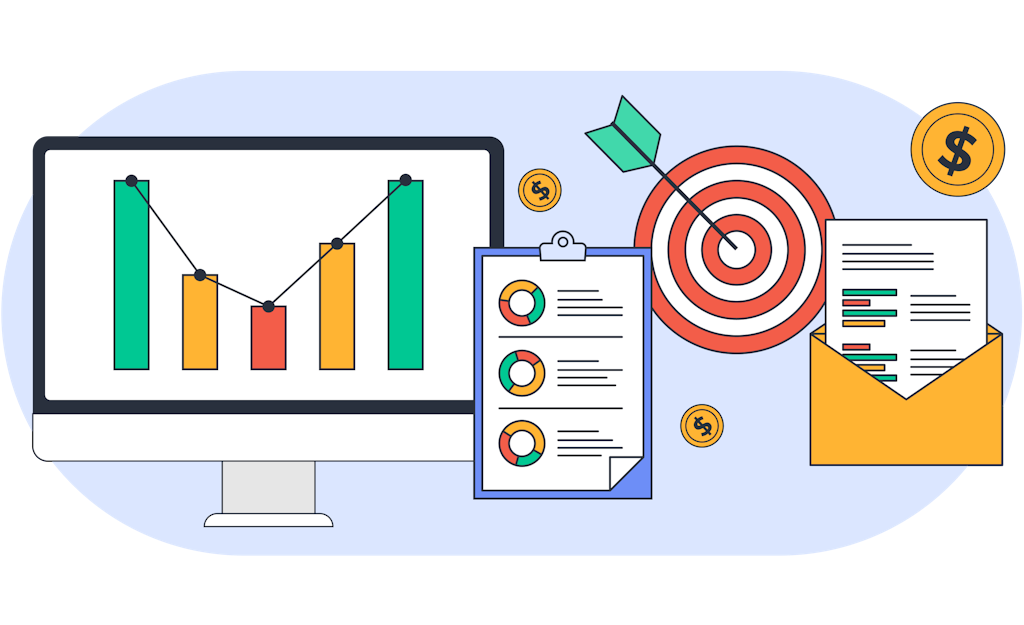
How do you Measure the Success of B2B Marketing?
B2B sales cycles are complex and involve multiple touchpoints. Tracking interactions helps you understand where prospects are in their buyer's journey and what information or support they may need next.
Measuring the success of B2B marketing goes beyond sales numbers. It tracks interactions, lead quality, engagement metrics, and content performance. These indicators collectively lead to sales by nurturing relationships, providing marketing solutions, addressing pain points, engaging prospects at the right time, and facilitating continuous improvement in marketing strategies.
Conclusion: B2B Marketing Metrics and KPIs to Measure Performance
Conclusion: B2B Marketing Metrics and KPIs to Measure Performance
Using Key Performance Indicators (KPIs) and metrics is essential for businesses seeking to thrive in the modern landscape. KPIs enable businesses to assess the performance of marketing campaigns, channels, and tactics. They offer insights into what's working and what needs improvement.
Revenue metrics clearly show marketing efforts' return on investment (ROI). They help determine whether marketing spend is generating the desired results. By tracking revenue-related KPIs, businesses can assess their progress toward achieving these goals.
Be Smart With B2B Lead Generation
Be Smart With B2B Lead Generation
With our advanced technology, we're helping companies like yours discover the right people and organizations, streamline lead generation, and drive revenue growth. Gain a competitive edge with marketing solutions that leverage intent data to understand your prospects' buying behavior and timing.
Get started With our advanced technology, we're helping companies like yours discover the right people and organizations, streamline lead generation, and drive revenue growth. Gain a competitive edge with marketing solutions that leverage intent data to understand your prospects' buying behavior and timing.
